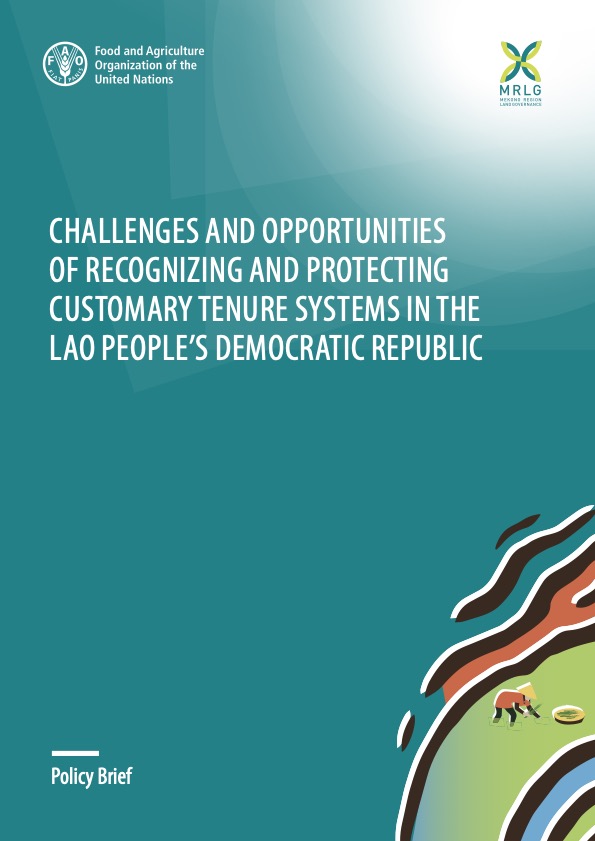Resource information
This policy brief was developed in order to enable a meaningful engagement and policy dialogue with government institutions and other relevant stakeholders about challenges and opportunities related to the recognition of customary tenure in the Lao People’s Democratic Republic. Customary tenure is understood to be the local rules, institutions and practices governing land, fisheries and forests that have, over time and use, gained social legitimacy and become embedded in the fabric of a society. Although customary rules are often not written down, they may enjoy widespread social sanction and may be generally adhered to by members of a local population (FAO, 2016). In this context, this document aims at strengthening the recognition and legal protection of customary tenure systems in the country in line with the key principles of the Voluntary Guidelines on the Responsible Governance of Tenure of Land, Fisheries and Forests in the Context of National Food Security (VGGT). It is important to note that customary tenure systems exist on both communally managed land and on individual land used by individuals and households.

